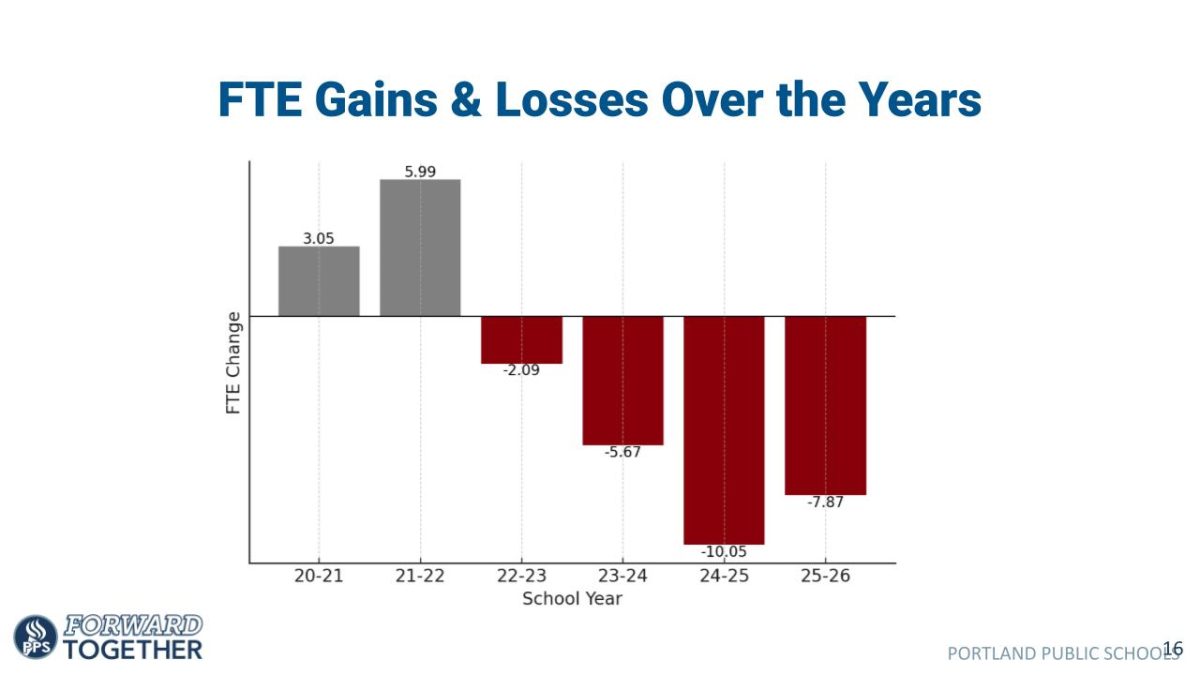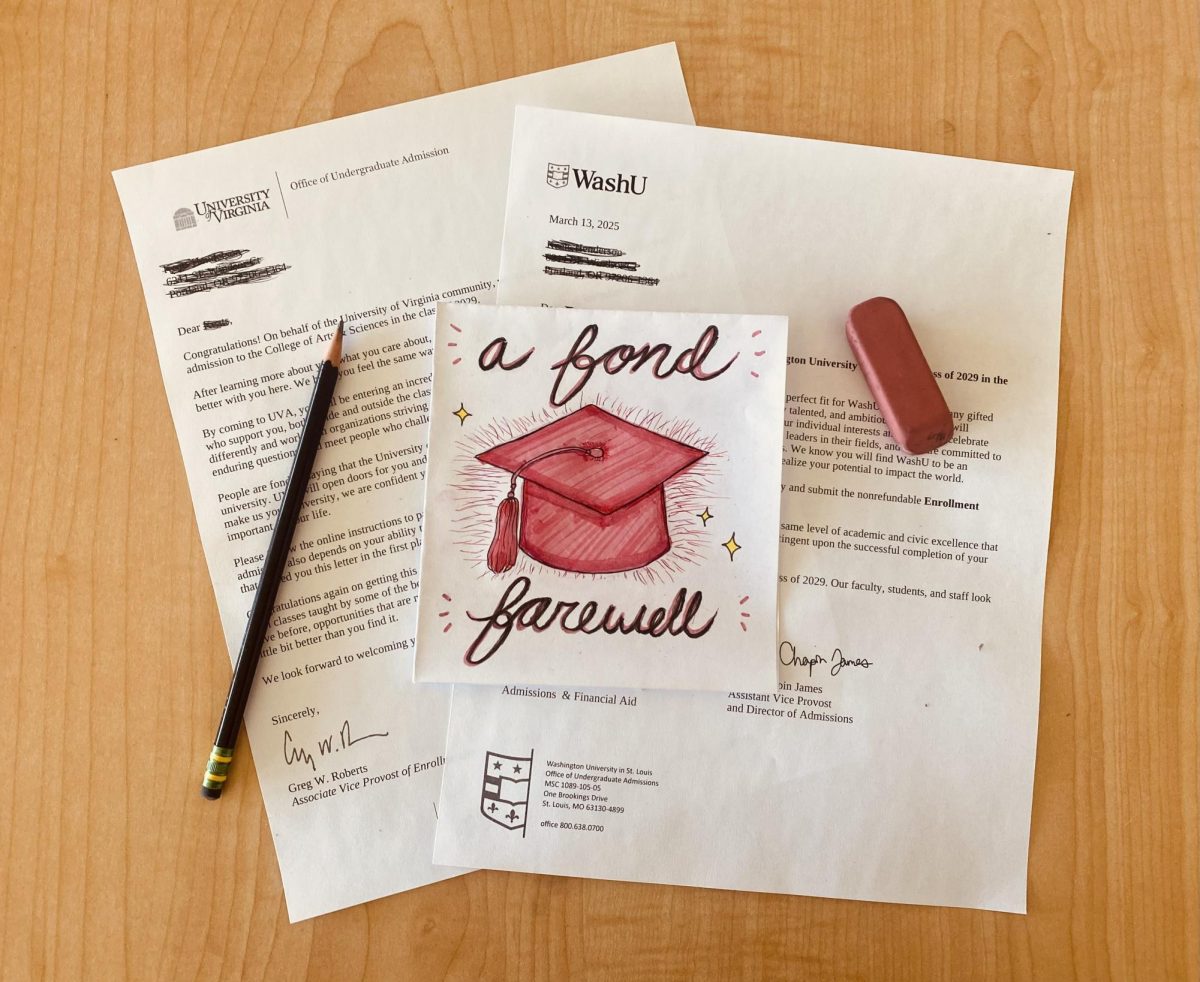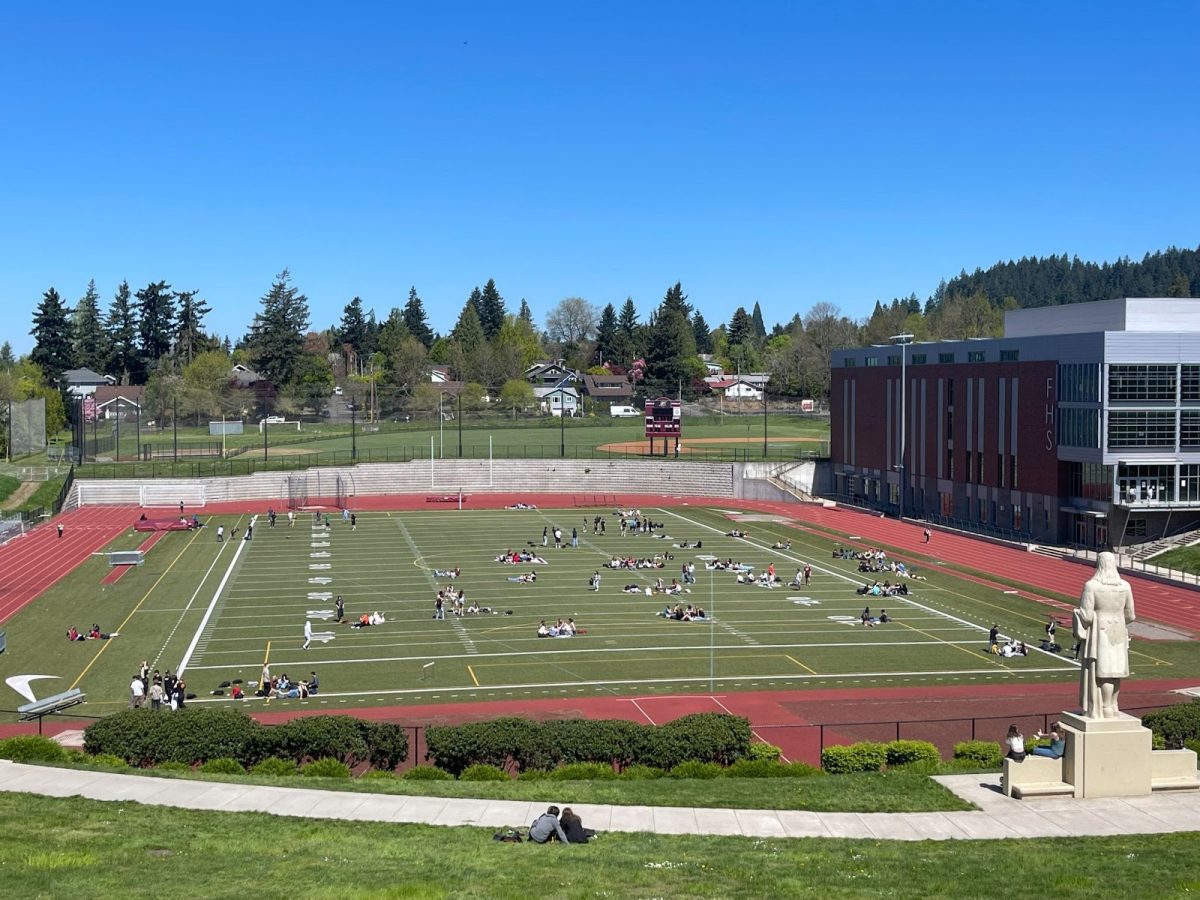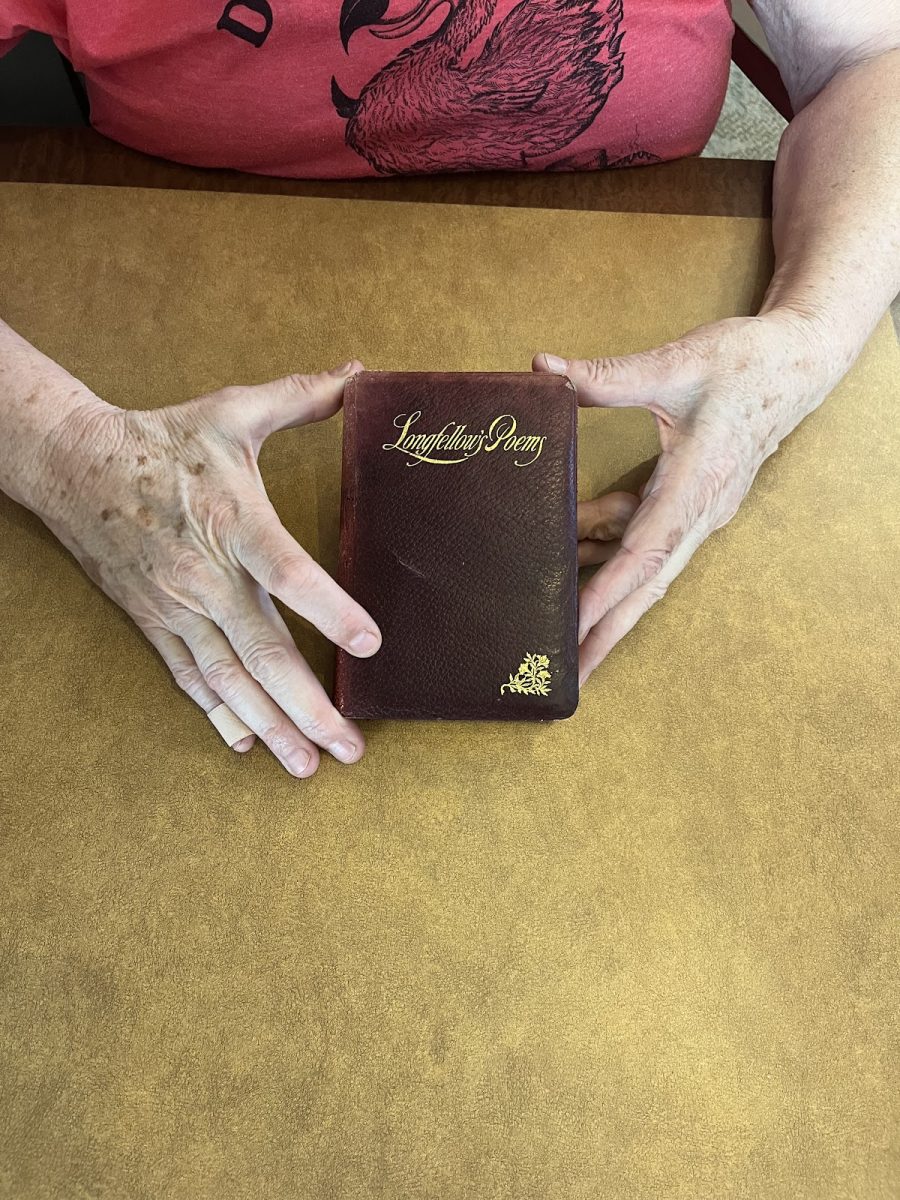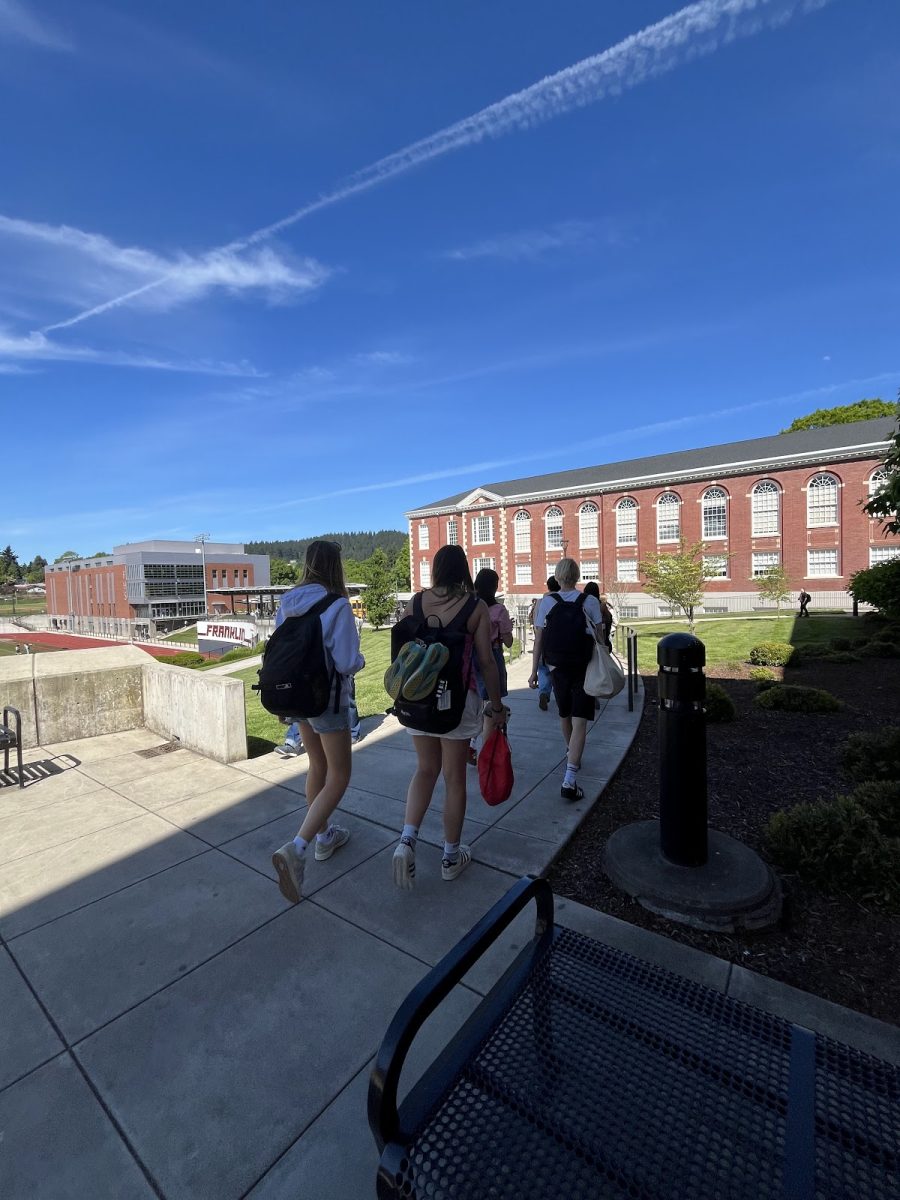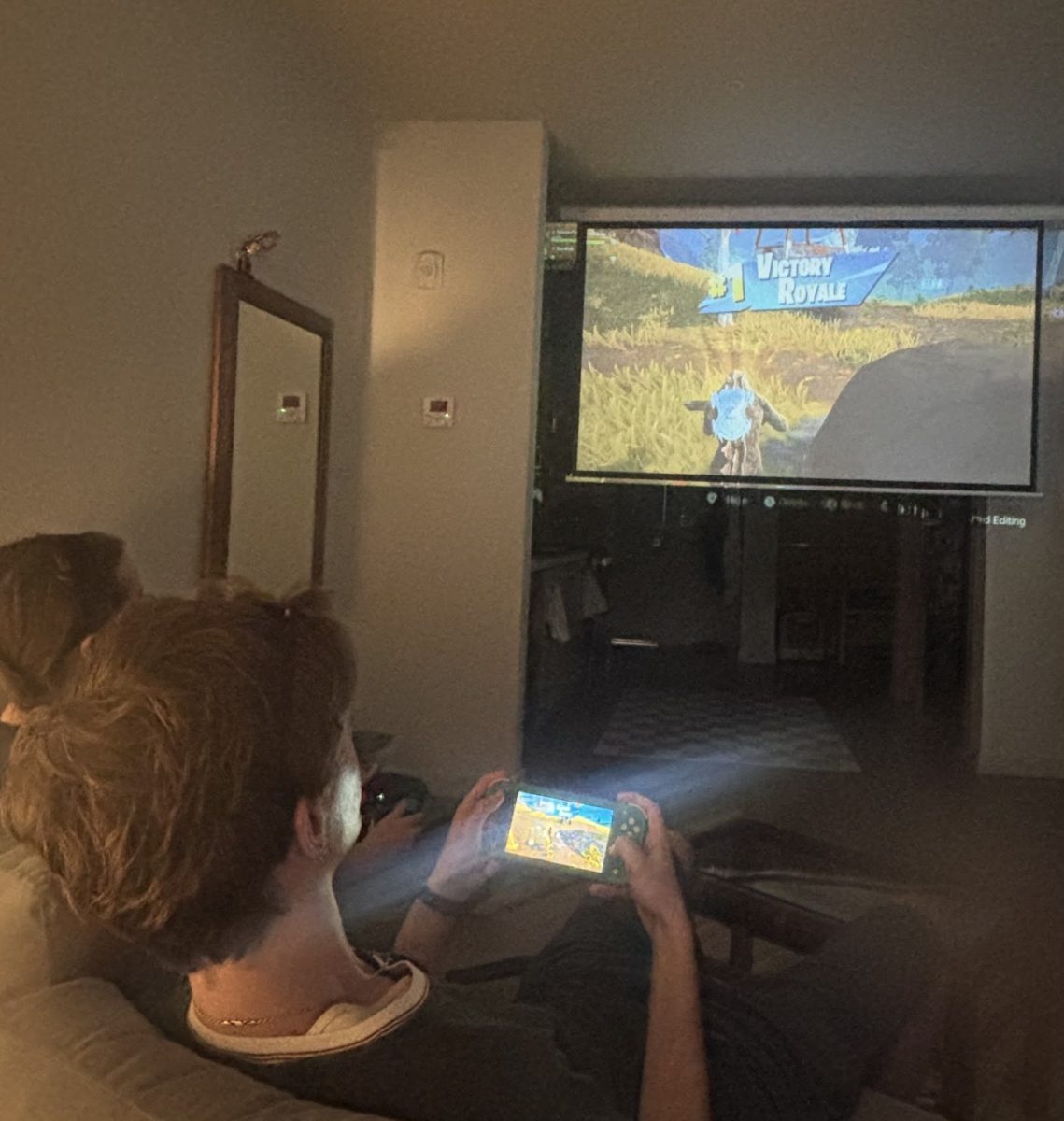Lane Shaffer goes to class at McDaniel High School. Then he goes to a meeting with the Multnomah County Youth Commission, and at the same time he has to prepare for the AP US History test in a support class. After that, two days a week, he goes to work. He then returns home at midnight. When he isn’t working, he might visit a friend and do homework with them. Over the weekends he has sports. Shaffer is taking four AP tests this year, and he hasn’t had a single class in two of them since the end of the first semester. Fitting an interview with him into his busy schedule was challenging. After the interview he would go on to work for multiple hours. Shaffer wants to study for the tests, he says, but immediate concerns like homework assignments tend to be prioritized. Shaffer, like many other people at Franklin and in Portland, has dealt with unique challenges due to AP classes. For a long time, Advanced Placement classes have been viewed as a valuable experience. With a year-long quarantine, however, they have led to burnout, stress, and academic struggles like they hadn’t before.
AP, or Advanced Placement classes, are college-level courses that give students their first taste of postsecondary education, with a more rigorous homework load, faster pacing, and sometimes more advanced subjects than non-AP classes. They also can provide students with a college credit, which can save money in the long term. This college credit can be attained through an AP exam, a long test that covers a variety of topics and skills at the end of the year.
Lilli Rudine is a junior at Franklin. She didn’t take AP classes in her sophomore year, and she struggled to stay interested in some subjects. This year, though, she’s taken multiple, and she’s preferred those AP classes. “I think AP classes are more supportive,” she says. “There are high expectations, and there’s support [because of] that.” In Modern World History, she hadn’t felt challenged, and she says that had negatively impacted her learning experience. Rudine has much preferred AP US History and hopes to take AP Government next year. The college credit is valuable to her, but she says she might take the class regardless of whether the extra credit was available, even if it were simply a higher-level high school option.
Around the year 2010, Franklin took a more aggressive approach toward providing students with the opportunity to take AP classes. Students of color in particular were taking fewer classes and tests than white students, which led Franklin administration to create systems within organizations like the Black Student Union, encouraging students to take AP classes. This increased emphasis on AP helped lead to what has been a rapid rise during the 21st century in AP testing, including in Oregon. More and more schools started offering such classes, and more and more people were taking those opportunities. That was working for many Oregonians—until COVID hit.
With the transition to online learning, Portland Public Schools decided to use a new schedule format, the 4 x 4, with four classes in the first semester and four more in the second. Instead of dealing with eight classes and all the associated homework, students would only have to handle four at a time. This worked for many people, but not for students enrolled in AP, who have to take the tests in May or June. AP courses demand a knowledge of more topics than can often be taught in a single semester, and those taking the class in Semester 2 have even less time to prepare. Those taking the class at the start of the year received a full semester of instruction, but there is a two-to-three-month gap between the end of the first half of the year and the exams. The school has tried to make up for this gap with support classes, where teachers provide resources and even extra classes for students who want help preparing for the exam. Still, there are a number of obstacles created by the 4 x 4 system.
Greg Garcia teaches AP US History, also known as APUSH, at Franklin. He also runs a support group for APUSH students throughout the district, with meetings twice a week in the afternoons. He has taught at the college level as well, and says that APUSH takes about nine months to teach. In a normal year, Garcia has nine months to teach it. This year, however, he has had to provide adequate instruction in just a few months. This has meant avoiding the usual test prep and condensing the entire course into a very small time frame. At one point, he sent a lesson plan to a colleague for proofreading. The lesson was about the long-answer section of the test, and the proofreader, confused, “kept changing the word ‘lesson’ [in the lesson plan] to ‘unit.’ I had to say… ‘We do this in 92 minutes. We even do this in 70 minutes for distance learning,’” Garcia says.
Not every student takes only a single AP class or less. Many take two, some three, some more than that. In fact, students have taken more tests on average in recent years than they did before. The homework load required to handle so many college-level courses and tests leaves some people with very little free time at all.
Most students who start taking an AP class complete it. In most classes pre-pandemic, no fewer than about 90 percent of those who took the course in the first semester also took it in the second. In many classes this year, that pattern holds up. But in two classes in particular, the rate of students dropping out has skyrocketed.
At Franklin, sophomores don’t have many AP options. Most courses are offerings for those who want to keep taking classes after they’ve already taken the minimum to pass high school. For instance, AP Statistics is available for those who already have 3 Math credits, so the people who take it are more often juniors and seniors. However, any sophomore who so desires is allowed to take AP Modern World History, a more advanced version of another class by the same name, as a sort of introduction to the Advanced Placement system. As a result, AP Modern World History, often referred to as “AP World,” is the most popular AP class at Franklin, with 235 students enrolled in the first semester of this year alone. With such a large number of enrollments, and being a class for tenth-graders, it has students taking the class for a variety of reasons, most of whom never having taken such a course in their lives. In most years, they might have time to learn, to adjust to a new educational style. This year was different.
Online school is not the same as in-person school. There is a lack of social interaction between students. The definition of “attendance” is nothing like that of in-person classes. The vast majority of students keep their cameras off, invisible to the outside world. Because of a more flexible schedule, many people have jobs that they work from the afternoon into the night. For a long time, large-scale distance learning did not exist, at least not at public schools. Then the COVID-19 pandemic hit. An airborne, contagious virus could be dangerous at a school, a place long known for being a hotbed of illnesses from the common cold to measles, so campuses throughout the country closed for months and months. The transition to distance learning was jarring for students everywhere. Taking one’s first-ever AP class during this time would not be easy. Students dropped out of such classes far more often than they had in years past. Less than 60 percent of AP World students kept going after the first quarter.
Many people enrolled in AP have their doubts each year, and many speak to counselors about switching to an easier class. “In a normal year, we would push back a bit,” says Holly Vaughn-Edmonds, a counselor at Franklin. “During COVID, we knew how much stress kids were under and families were under and the last thing we were going to do would be [to say] ‘hey, you need to talk it out…’ It’s just not the right year to do that.” The lack of resistance from counselors to students dropping out has also accounted for some of the rise. This sudden increase in students leaving early has not occurred as much in classes outside of core courses, a sign that the wider net cast by the history programs leads to more students inundated with an unexpectedly heavy load. Based on the data, the shutdown may have had the hardest effect on the least experienced students.
AP classes often make high school more challenging for students, often in exchange for a more engaging curriculum. They offer a level of rigor more comparable to that of a college class, providing students with valuable experience that may help them with their postsecondary education. They also take a heavy time commitment and a motivation to work for long hours. The COVID-19 pandemic and the response to it have upended that, upsetting the balance for countless people at Franklin and beyond. In the best of times, it can be worth taking. In the worst of times, many have been forced to give up.



